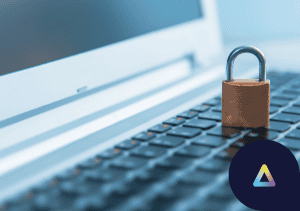You’ve just taken on a new client and need extra agents up and running within a matter of weeks. Or maybe you’re approaching your traditional ramp up season and want to start getting new agents into the system.
Having hired agents (not easy with the current labour squeeze), you need to send them devices so they can start their training.
The shipping of devices to new hires is absolutely one of the biggest headaches facing CX leaders at the minute. Its costly, enormously wasteful, and can even damage your EX during those crucial first few days. Plus the experience for agents is normally pretty terrible as they arrive late – see James Jarrett’s experience here.
This is the problem I want to help you solve.
I want to show you an alternative approach, one that will eliminate wasted time and effort, reduce costs, and importantly help you to improve the onboarding experience.
The arguments against sending devices to new hires
Some of the insights that have been shared with us are eye-opening. I wonder how many of you reading are experiencing similar challenges and frustrations?
Device costs and losses
I regularly hear from BPOs that for every 1000 agents needed, they need 1500 hires and 1500 devices. Why? Because they know the early-stage churn is so high (as it across the sector) that 30-50% of those new hires will never enter production.
But they are all sent devices.
And alarmingly, they don’t expect to recover even 60% of those devices from the new hires that no-show on day one or stop attending training sessions.
The inefficiencies in this process are staggering, from all angles. If you could reduce device loss by even 20%, how much of an impact to the bottom line would it make, factoring in the cost of retrieval and replacement?
Recently, our CCO Andrew McNeile wrote about the opportunities for cost-savings in the BPO industry. This is one of the areas he covered in depth, and the article is worth reading for any senior execs in the BPO/CX industry.
Procurement and logistics issues
At the time of writing, I’m hearing reports of lead-in times for new devices being measured in months, not weeks. The worst I’ve heard of so far is 10 months, but 6 seems to be the average. This is pushing everyone to buy second hand and, in many cases, average quality devices.
If you’ve just taken on a contract and need to scale up quickly then this is a real blow. Worryingly, there are BPOs out there currently turning down contracts, or simply not tendering, because they aren’t confident they can get the devices in time or that they can even breakeven if they do due to the high device losses.
But what if you already have enough devices in your warehouse? Well, that’s where bumps in the logistical chain are wreaking havoc and costs are ratcheting up. The entire supply network globally is under immense pressure. 25% of the cost of equipping a new agent is eaten up by logistics alone.
Delivery times are longer than anticipated. A window of 2-3 days between the agent signing the contract and receiving their device is best case scenario but more likely to be 5-7 days. Between that wait, and the back and forth with contracts, it’s likely at least 7-10 days from agreeing to join before a new employee is actually in a position to begin training.
Frankly, in today’s gig economy where agents have a wide range of employment options to choose from, that’s too long. And it’s contributing to those high rates of early-stage attrition I mentioned earlier.
The alternative to shipping devices during training
Don’t.
Instead, allow and enable new hires to use their own devices. At least for the period of their training. What I’m describing here is BYOD (Bring Your Own Device). If you’re connected with me, you’ve probably heard of it, and maybe you have some experience of it already.
At ThinScale we’ve been involved in over a hundred different large-scale BYOD roll-outs for BPOs around the world. It’s having a transformative impact on their speed of deployment and profitability.
But let’s just say, for whatever reason, you’d prefer agents only used corporate devices when they are in production. Maybe it’s a requirement of your contract with a particular client, or maybe you have a large stock of devices already paid for.
Either way, why send a device to an agent for their initial training period? It would be faster, cheaper and a better use of resources all-round to implement secure BYOD for that training period.
This will give your team, and the new employee, enough time to assess their progress and whether it’s a good fit. And it means the newest batch of recruits can start training as soon as possible, which means they get into production sooner too and gives your recruitment team longer to find agents for your program. Plus, reducing that turnaround time has a big impact on your attrition between signing and day 1 of production.
And if an employee never logs on for that first day of training, or they churn before ever actually taking a call from a customer, then there’s no damage done (beyond the time invested in them to that point).
There’s no device to be recovered. It’s a clean break, and you can put the time and effort into committed employees instead. And as those ones come to the end of their training, then you send them a device.
The result? Far fewer devices which need to be recovered and replaced. Far less complexity. Millions of dollars in savings.
“BYOD won’t work for us”
There are a few terms in the BPO industry that tend to polarize opinions. And BYOD is certainly one of them. For many BPOs (particularly the ones we partner closely with) it’s become a foundational pillar of how they operate. But for others, I accept that it’s still a very new concept and that one that’s often misunderstood.
Chiefly, the major resistance to BYOD tends to be two-fold: employee access to suitable devices in certain territories, and security. We’ve examined both issues in huge detail over the past few years and you can find out more on our website.
But very briefly let me address those concerns here. Yes, BYOD is possible in any territory, even in APAC. And yes, you can maintain HIPAA, PCI and GDPR compliance when operating a BYOD model. We know because we have 9 of the top 10 BPOs globally using ThinScale in dozens of countries. We’re confident both have been addressed and we can help you on that journey.
Let’s find a solution that works for you
If you’re interested in hearing more about how BYOD could benefit your organization then get in touch with us. We’ve helped CX providers in North America, Europe, Africa, and APAC with their BYOD deployments, ensuring that it’s done securely and efficiently. We’d be happy to talk you through the process and the best practices.
Worst case scenario, you decide it’s not for you. Best case scenario? Massive cost-savings and operational efficiencies. Contact us below, or feel free to connect with me directly on LinkedIn.




